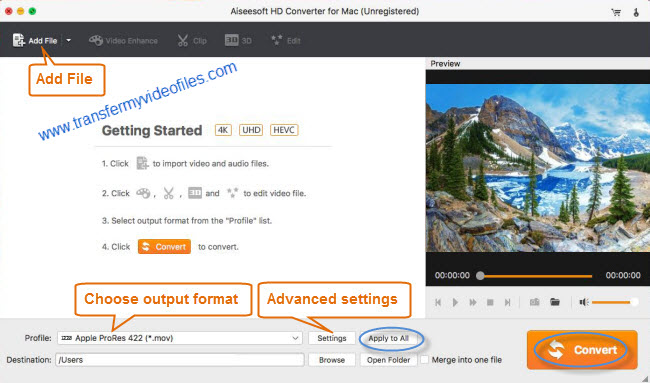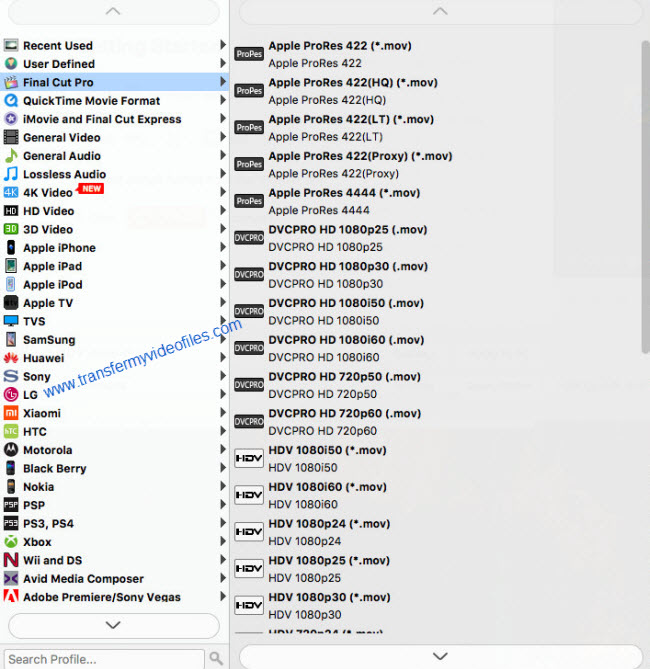How to convert AVCHD MTS clips to ProRes for After Effects? This post is mainly talking about how to transcode ACVHD (MTS) clips to ProRes, so that they can be imported directly into After Effects.

Needed to transcode AVCHD MTS clips to ProRes for After Effects
“Hi, I am an AFTER EFFECTS junkie. I have AVCHD files (1920×1080 60p) created by the Sony HDR-CX240 and would prefer to edit in ProRes and not native AVCHD. Has anyone successfully transcoded to ProRes using third party software and could share the recipe? Thanks for any help.”
For a fast and fluid AVCHD workflow with After Effects, you can try out HD Video Converter for Mac. With this app installed, you are ale to convert AVCHD footage to the five flavors of ProRes codecs, including Apple ProRes 422, Apple ProRes 422 (HQ), Apple ProRes 422 (LT), Apple ProRes 422 (Proxy), and Apple ProRes 4444. Read on to find a step-by-step guide talking about how to transcode MTS clips to ProRes for After Effects.
First of all, download a demo of HD Video Converter for Mac

[Guide] – How to convert AVCHD MTS clips to ProRes for After Effects?
Follow these steps:
Step 1: Run HD Video Converter for Mac as a professional AVCHD to ProRes Converter. When its main interface comes up, click ‘Add File’ to load source video to it.

Step 2: Select ‘Apple ProRes (*.mov)’ as output format for opening with AE
From the Format bar, move to ‘Final Cut Pro’ catalogue, and select one of the five ‘Apple ProRes (*.mov)’ options as target format.

Important: If you’ve loaded a number of video clips to do batch conversion, please do remember ticking off ‘Apply to All’ option before you start.
Step 3: Adjust video and audio settings (for advanced users)
If necessary, you can click ‘Settings’ button and go to ‘Profiles Settings’ panel to modify video and audio settings like video encoder, resolution, video bit rate, frame rate, aspect ratio, audio encoder, sample rate, audio bit rate, and audio channels. 3D settings are also available.
Step 4: Click ‘Convert’ to start AVCHD MTS to After Effects ProRes conversion.
Step 5: Click ‘Open Folder’ to get generated ProRes QuickTime files for transferring and editing in After Effects with optimum performance.
Related posts
Sony a5100 and FCP X – convert a5100 video files to ProRes
Nikon D5300 to FCP X Converter – encode D5300 MOV to ProRes
I couldn’t get Premiere Pro CS6 to recognize audio on MTS files
AVCHD and Avid – Transcode AVCHD to DNxHD for Avid import
Is lossless conversion of AVCHD to AIC for iMovie/FCE possible?
